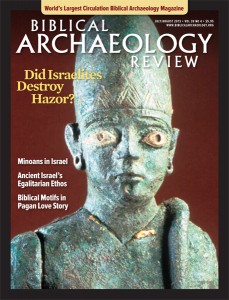The Iron Age I Structure on Mt. Ebal: Excavation and Interpretation
By Ralph K. Hawkins (Winona Lake, IN: Eisenbrauns, 2012), xii + 287 pp., $49.50 (hardcover)
In 1980, during an archaeological survey, Israeli archaeologist Adam Zertal discovered the site of El-Ahwat on Mt. Ebal (near Nablus/Shechem). He excavated the site for several seasons (between 1982 and 1989) and in a series of academic, semi-popular and popular articles,a as well as in chapters of a popular book on his understanding of the development of early Israel, he argued that the site was an Israelite cultic site, and that it can be equated with the altar that Joshua built on Mt. Ebal, as described in the Bible (Joshua 8:30–35). He also contended that the main structure at the site should be understood as a stone-built altar whose architectural plan and design was similar to the large altar described in Solomon’s Temple in Jerusalem.
Ralph Hawkins, now associate professor at Averett University in Danville, Virginia, wrote his doctoral dissertation on the site and has now published the volume under review in an attempt to summarize and discuss the archaeological, historical and Biblical data regarding the site, now often popularly referred to as “Joshua’s altar.”
Already a library member? Log in here.
Institution user? Log in with your IP address.

